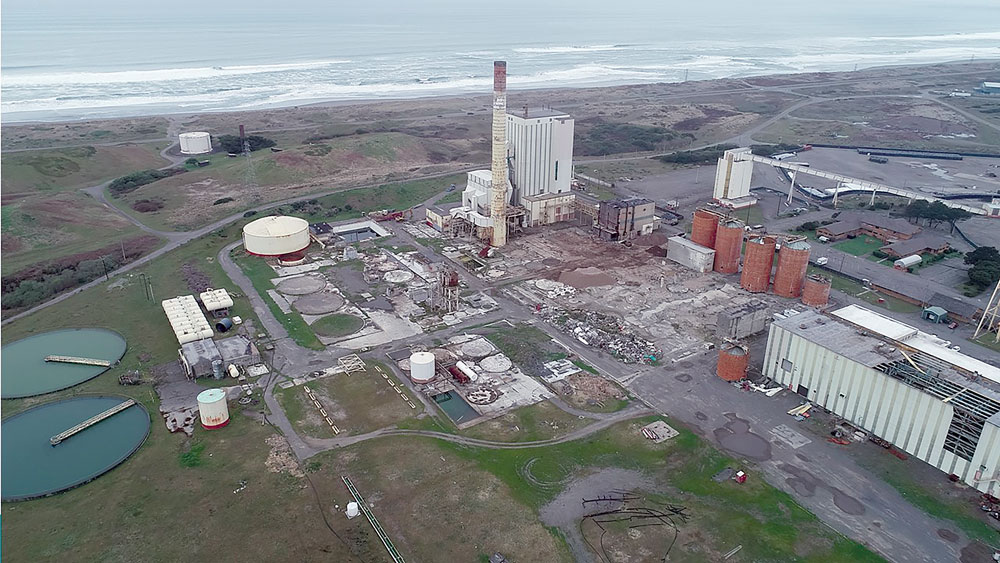Monitoring Aquaculture Growth and Impacts in Humboldt Bay

By Salmonid Restoration Foundation
In May 2020, the Salmonid Restoration Foundation (SRF) was awarded a grant from the Rose Foundation’s California Watershed Protection Fund for its project on Humboldt Bay Aquaculture Research, Outreach, and Education. This project proposes to track the Nordic Aquafarms project (NAF), advocate on behalf of the community, communicate important information to the public, and prepare for future aquafarming scoping projects in the Humboldt Bay watershed.
NAF plans to build a “nearly $400 million land-based fish farm on the Samoa Peninsula” at an old pulp mill site on Humboldt Bay, which is a sensitive and vital natural resource. Humboldt Bay contains California’s second-largest estuary, home to the largest remaining eelgrass beds in California. While NAF has not yet decided on several major aspects of the facility, including what species of fish will be farmed there, there is considerable concern from many parties about potential impacts to water quality and availability, as well as the recovering shoreline habitat. Additionally, NAF’s project would discharge waste with an outfall pipe extending almost a mile out into the ocean.
The local community has valid concerns about water quality and the economy. This is a major land-development project, with the potential to have both large costs and benefits to Humboldt County’s economy and environment. The current NAF proposal requires a large amount of freshwater, which would come from the municipal water supply in the Mad River. Diverting this water may have detrimental effects on the water quality of the river and its estuary. Environmental impacts such as reducing available summer flow in the Mad River or polluting Humboldt and Arcata bays could disproportionately affect specific communities in this area.
SRF’s oversight project will further investigate and respond to community concerns regarding potential pollutant exposure and water use issues that may result from this or future aquaculture projects. SRF will identify the types of potential illnesses, diseases, and their relationship with known contamination sites, as well as potential public health concerns and/or threats. Polluted runoff is already a significant problem in Humboldt Bay that impacts local ecosystems, recreation, and the existing oyster aquaculture industry. Humboldt Baykeeper has previously conducted water quality testing in four Humboldt Bay tributaries (Campbell, Jolly Giant, Jacoby, and Janes creeks) for key pollutants, including fecal coliform. The Wiyot tribe is conducting testing for potential contaminants including metals, dioxin, PCBs, and suspended solids at the Humboldt Bay Entrance and Mad River Slough. SRF will continue to compile similar local water quality data to use as a benchmark for the watershed, and to advocate for additional water quality monitoring at the proposed NAF site.
Currently there are few third-party entities tracking the Nordic Aquafarms project or objectively evaluating its plans. SRF is well-positioned both to research and monitor this project throughout the planning process, as well as to mobilize our constituency to advocate for certain environmental considerations. The Humboldt Bay area has been identified as a desirable site for future aquaculture projects, and baseline research will be valuable and necessary for local entities to evaluate the potential and actual environmental impacts of such projects on water quality and other local risk factors. Even if this particular aquafarming project is not approved, this site has been identified as a high-potential location, and it will likely be re-developed sometime in the near future.
For more information and updates, please visit our website at calsalmon.org.
